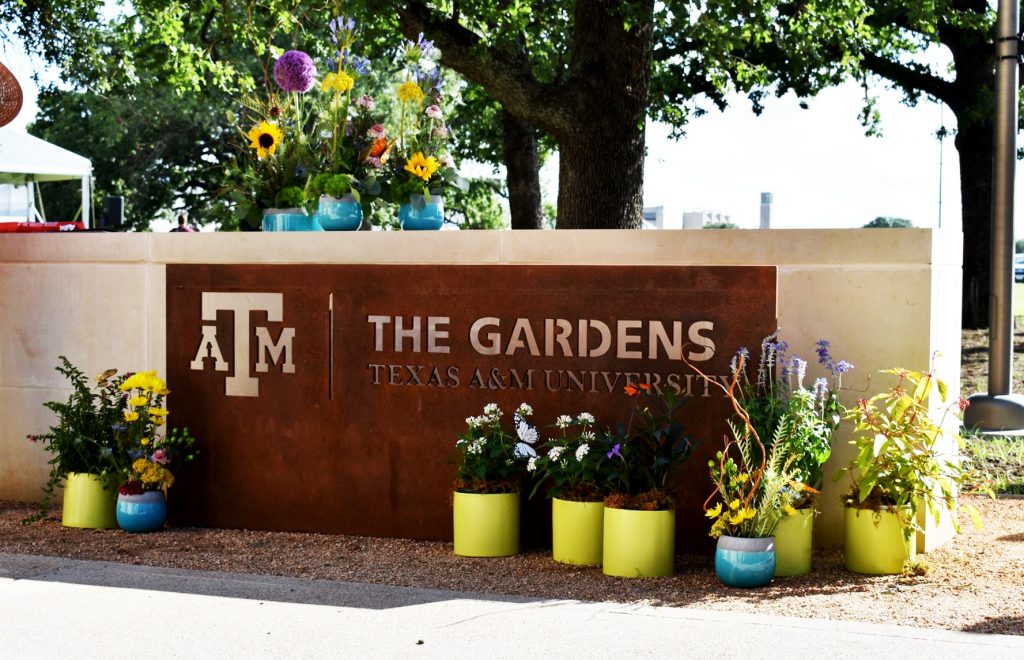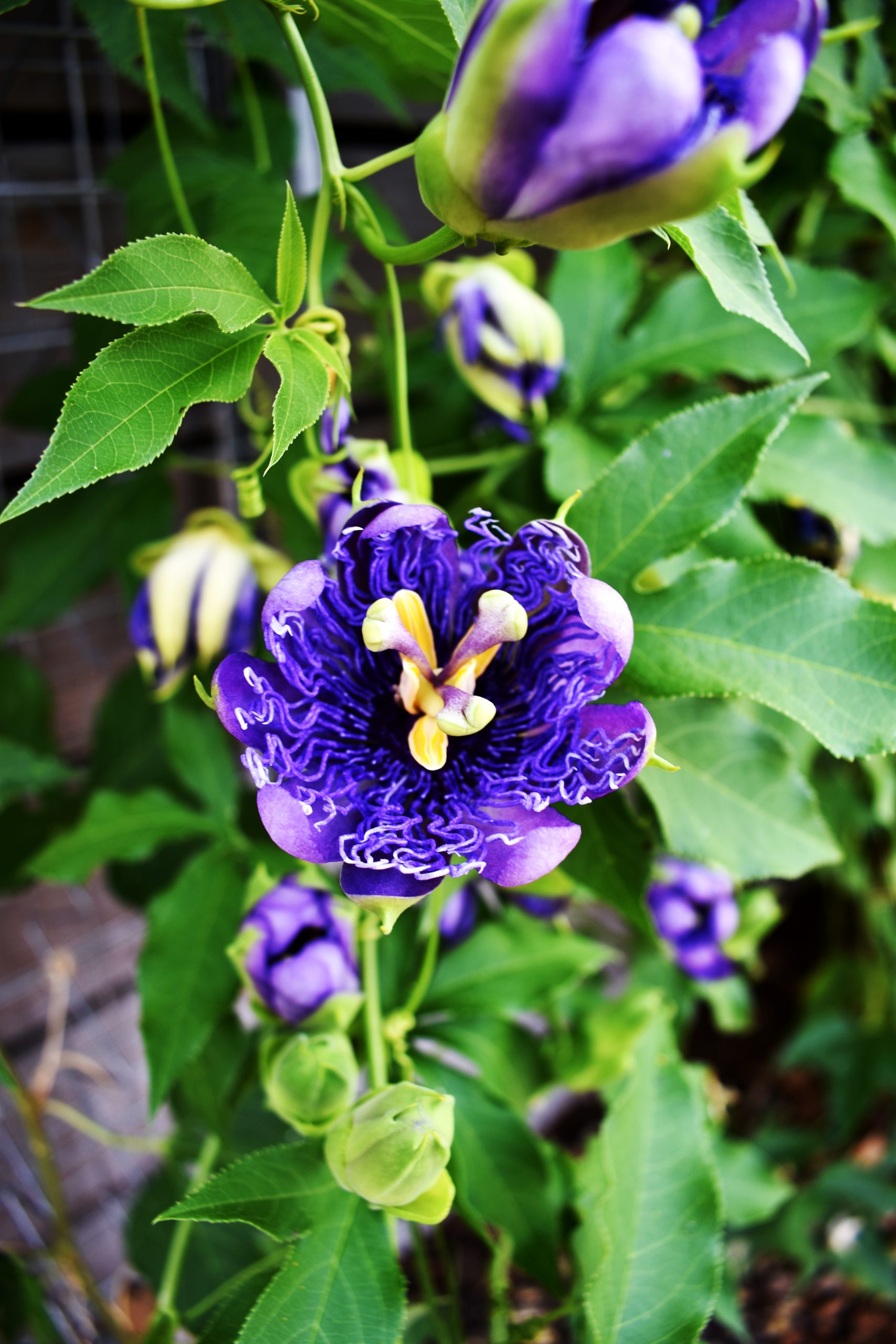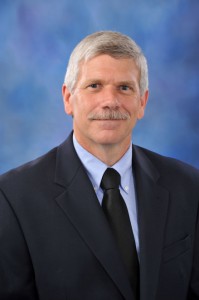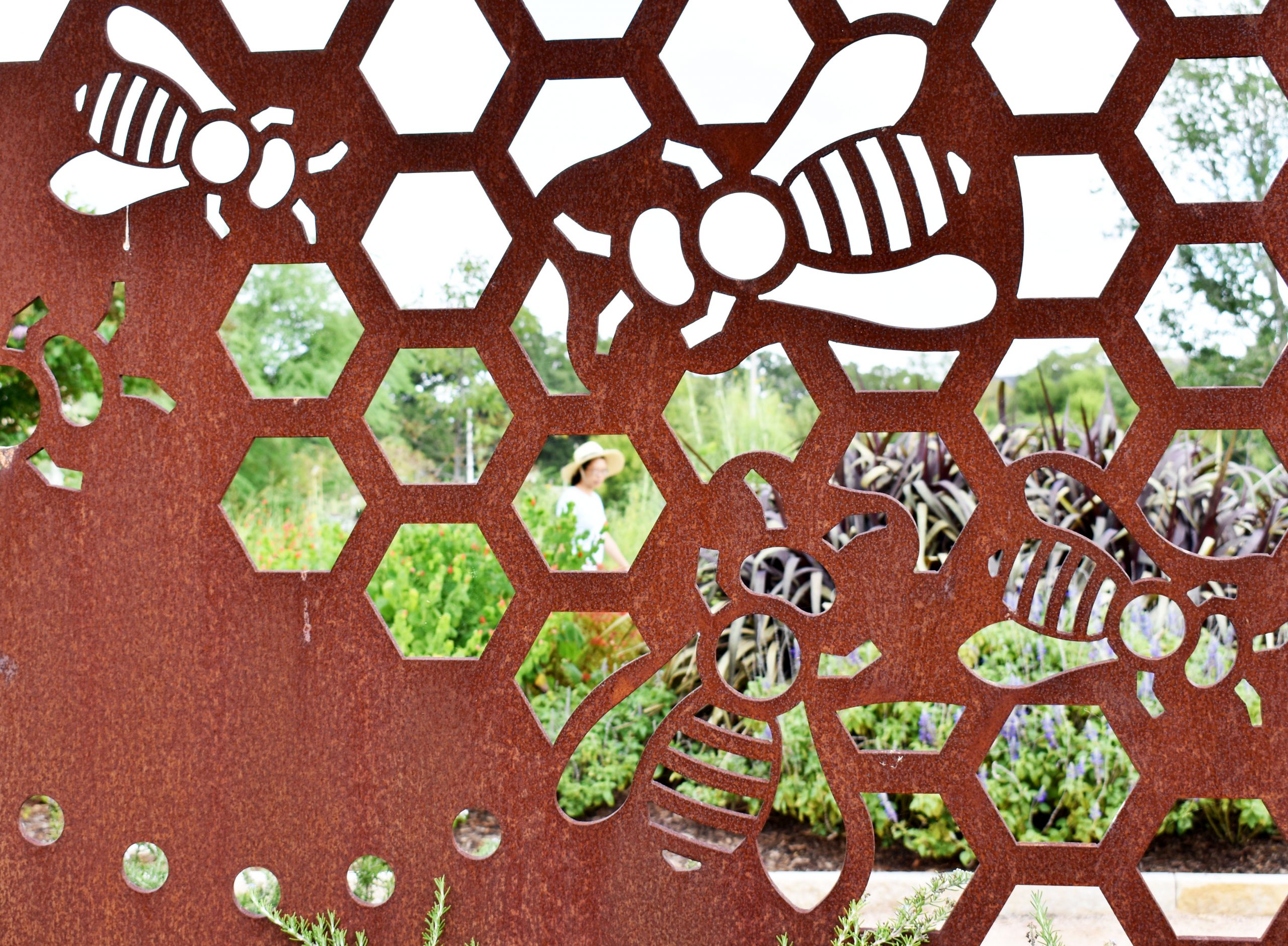Growing Harmony at The Gardens
College of Liberal Arts and College of Agriculture and Life Sciences team up to build a “location-aware” musical experience for visitors throughout The Gardens at Texas A&M.

By Helen White, Texas A&M AgriLife Communications

Ball said the music refocusses and draws your attention to details that might other wise be overlooked in The Gardens.
For a limited time, a walk through The Gardens at Texas A&M University becomes an immersive experience of both nature and music thanks to collaborative efforts from professors in the College of Liberal Arts and the College of Agricultural and Life Sciences.
Growing Harmony is a three-phase experience in the Leach Teaching Gardens:
Phase 1: Growing Harmony: Pollination is available to the public until April 30. Site-specific music created by multimedia artists and composers, the Holladay Brothers, begins at The Gardens’ entrance and continues around its paths.
Phase 2: Growing Harmony: Taking Root will add new music by Texas A&M student composers for additional areas of The Gardens. Phase 2 will be available from June 19-July 18.
Phase 3: Growing Harmony: ReBloom will reactivate each of the previous phases of Growing Harmony and add new interactivity modes. Phase 3 will be available from Oct. 1-31.
Getting Back Outdoors
The project began when James R. Ball III director of the Academy for the Visual and Performing Arts and assistant professor in the College of Liberal Arts’ Department of Performance Studies, searched for new, exciting and COVID-19-safe ways to bring art and live performances to audiences. He wanted to bring a project like the ones Hays and Ryan Holladay had composed for the National Mall in Washington, D.C. and Central Park in New York City to the Texas A&M campus.

James R. Ball III is an associate professor in the department of performance studies. His research interests include politics of spectatorship; diplomacy and performance; Performance and activism; performance and the law; Performance and technology; and interactive, immersive, and participatory performance.
“I felt the place that was going to create the most exciting moments in the performance would be The Gardens, a space of natural beauty,” Ball said. “This electronic music is recorded and live at the same time. The music you hear exists in one moment in one time and place as you’re moving around The Gardens listening to it. It’s different for every person as they move through The Gardens.”
Michael Arnold, professor in the College of Agriculture and Life Sciences Department of Horticultural Sciences and director of The Gardens, said the site has been a popular refuge for many visitors during the pandemic.
“We’re open every day from dawn to dusk,” Arnold said. “The Gardens have been the perfect place for people to enjoy nature, the outdoors and maintain safe distancing.”
Intersecting Music And Nature
The collaboration of The Gardens and AVPA is a unique way to incorporate music into the setting.
“This is my first venture with location-specific music,” Arnold said. “What I find particularly exciting is that the music playing was inspired by the location and the setting. It gives you an insight into the artist’s interpretation and provides a unique way you can experience the music, contemplate it and relate it to a particular setting in The Gardens.”

Michael Arnold is a professor of landscape horticulture in the department of horticultural Sciences. He is also director of The Gardens.
To reflect the purpose and character of the location in their music, the Holladay brothers consulted with Arnold and The Gardens staff about how the different sections of The Gardens were designed and its role as a teaching garden.
“I think my real hope for the music is it would really honor the design of The Gardens, that it would heighten the experience that clearly the layout was meant to foster and create the opportunity to hear or see something in a new way,” Hays Holladay said.
Growing Harmony is a location-aware musical experience offered by The Gardens and the Texas A&M Academy for the Visual and Performing Arts, AVPA. The music is mapped to locations in The Gardens with GPS and delivered via a free mobile app. As you move through The Gardens, the music you hear unfolds based on the paths you explore. To participate, download the Growing Harmony app from the Apple App Store or Google Play.
Anchoring Music To A Place
Composing music for a landscape can be a painstaking process, according to Holladay.
“First, we look at the map of the location and figure out how the people move through the space,” Holladay said. “And then, as we start to write the motifs, place those around the location on a virtual map and start to see how that feels as you move through it. It’s a lot of trial and error.”
Holladay said this project has been especially interesting throughout the COVID-19 pandemic because they have had to work remotely.
“It’s been a lot of Google Earth, finding similar-sized spaces, virtually mapping the Leach Teaching Gardens and approximating what it feels like, and finding as much information as I can about College Station,” Holladay said.
Mentoring Students

The famous Holladay brothers have teamed up with Martin Regan, associate professor of performance studies, to mentor students in creating phase two of Growing Harmony.
This is also the first time the Holladay brothers have worked with students.
For Phase 2: Growing Harmony: Taking Root, they are helping students in the Introduction to Composition course taught by Martin Regan, associate professor in the Department of Performance Studies, virtually map more sections of The Gardens.
The music for this phase will include students’ compositions that reflect their experiences in the newly mapped locations.
Phase 3: Growing Harmony: ReBloom will be a variation of the first two phases with more layers of interactivity built in.
An Evolving Experience
Like a garden, the musical experience will grow and change throughout the year.
“At the end of the project, we have these three pieces that are all connected to The Gardens and to each other in different ways so users can explore at their leisure,” Holladay said.
Whether you’re a regular visitor or you’re discovering The Gardens for the first time, Growing Harmony will enrich your experience.
“There’s something about the music; it refocuses and also draws one’s attention to details in that space that are easy to overlook,” Ball said. “Listening to music isn’t something that is disembodied. Even if we’re sitting in a concert hall, it affects the way we take in the music. Being out, having to move through the world is going to make us hear the music differently. It changes the way that we attend to the space.”
Originally published here by AgriLife Today.
